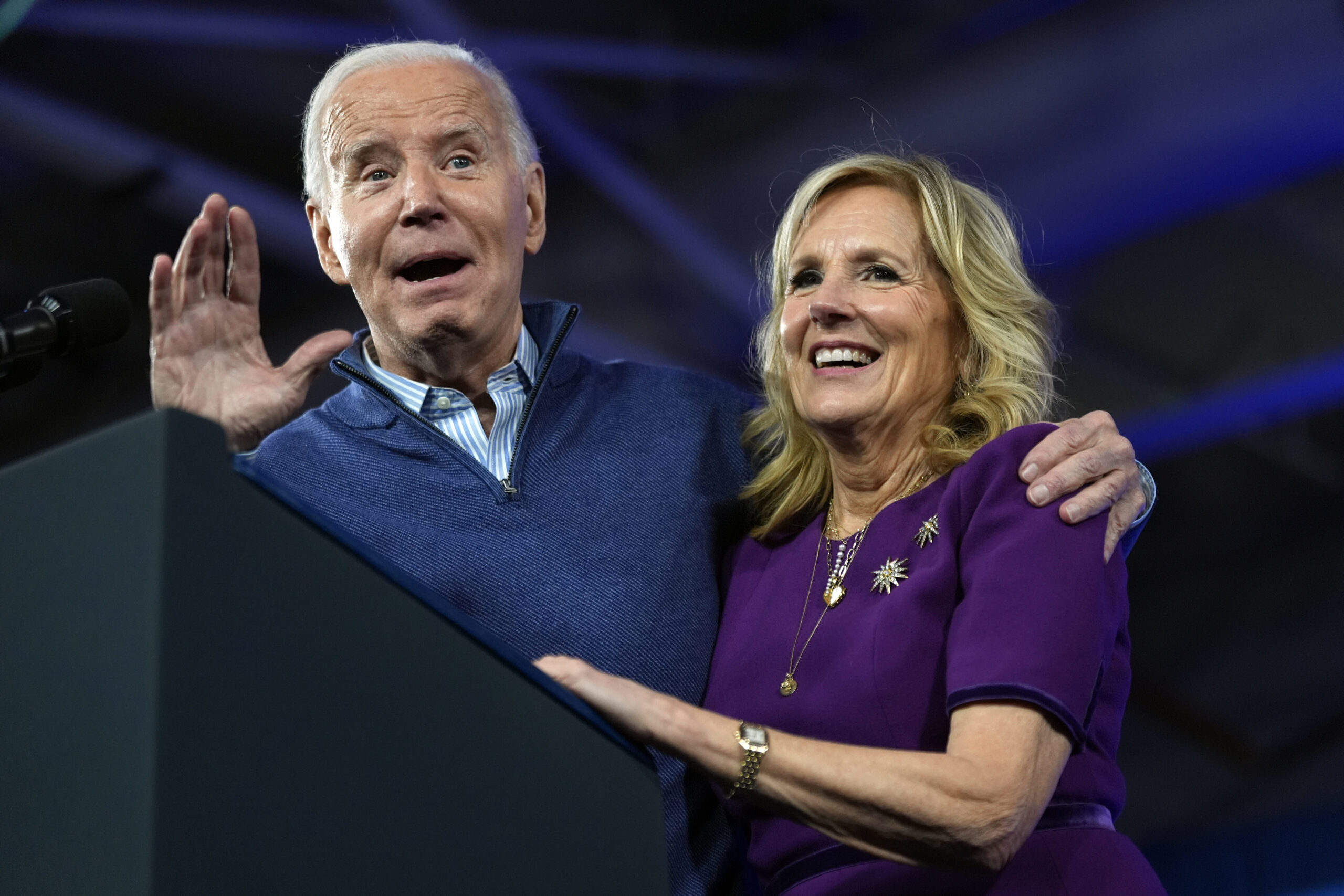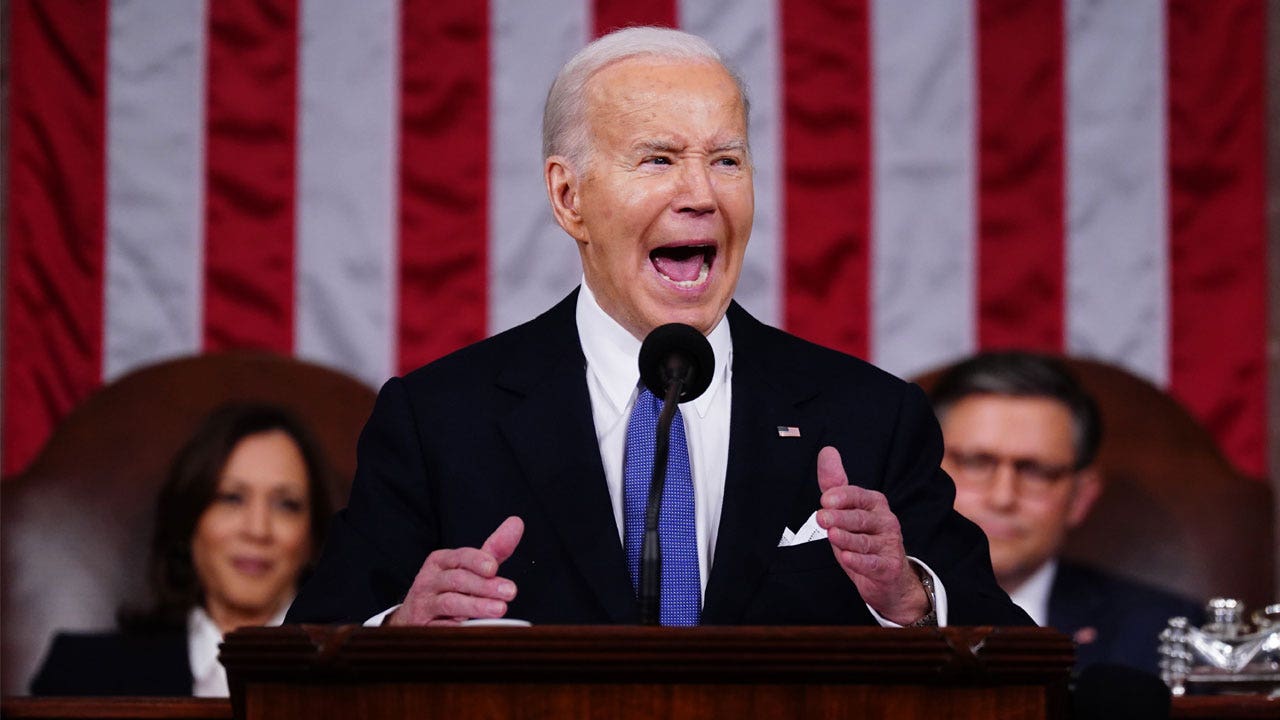You are using an out of date browser. It may not display this or other websites correctly.
You should upgrade or use an alternative browser.
You should upgrade or use an alternative browser.
Chronicles Of The 2024 Presidential Election Part 2
- Thread starter Omega
- Start date


Guillotine
Well-known member
The previous thread becoming too large to navigate. Time for Part 2
So, you deleted the first thread? Not the thread nazi's? That's messed up.
"Too large to navigate?" lmao
SayMyName
Well-known member
President Biden’s Fraying Coalition
Young, suburban and Hispanic voters are deserting him, giving Trump a lead in presidential election polls.
WSJ
By
William A. Galston
March 5, 2024 1:04 pm ET
The general election begins this week. When all the Super Tuesday votes are counted and delegates allocated, both President Biden and Donald Trumpwill have insurmountable leads for their parties’ presidential nominations. Mr. Biden will state his case for re-election on Thursday evening when he delivers this year’s State of the Union address.
On cue, major media organizations including the New York Times, The Wall Street Journal, CBS News and Fox News released stage-setting surveys with similar findings: Mr. Trump leads Mr. Biden by between 2 and 5 points nationwide, and the inclusion of minor-party and independent candidates modestly expands Mr. Trump’s margin.
Polls are snapshots, not predictions, but the correlation between current results and final outcomes will increase as we near the election. Even if there are surprises along the way—and it would be shocking if there aren’t any—we can assess the strengths and weaknesses of the major-party candidates as the opening gun sounds.
Broadly speaking, the coalition that gave Mr. Trump 47% of the vote in 2020 remains intact, while Mr. Biden’s winning coalition has frayed significantly. According to the New York Times/Siena poll, 97% of those who voted for Mr. Trump four years ago intend to do so again in 2024, compared with 83% for Mr. Biden. Ten percent of Mr. Biden’s former supporters say that they will switch to Mr. Trump. This helps explain the top-line numbers: Mr. Biden outpolled Mr. Trump in 2020 by nearly 4.5 points but now trails him by 2.1, a 6.6-point swing.
Key blocs in the Democratic coalition have eroded. In 2020 Mr. Biden won 18- to 29-year-old voters by 24 points; now his lead is half that. He won in the suburbs by 11 points but leads by only 2 now. His lead among black voters has fallen from 84 points to just 43, and it would be a historic shift if Mr. Trump comes anywhere near the 23% support the poll found. Mr. Biden prevailed among Hispanic voters by 21 points in 2020 but now trails by 6 in this expanding group.
This result for Hispanics may seem hard to believe, but it’s consistent with other findings. Only 16% of Hispanics say that economic conditions are excellent or good compared with 84% who rate them as fair or poor. Only 31% approve of Mr. Biden’s performance as president; 67% disapprove. A tougher approach to immigration is no deal-breaker: 45% of Hispanics favor making it harder to seek asylum at the southern border, nearly as many as the 47% who oppose it. Ideologically, Hispanics are to the right of the Democratic Party: Only 20% describe themselves as liberal, vs. 44% as moderate, and 30% as conservative.
The fraying of the Biden coalition is evident in the swing states as well. Four years ago, Mr. Biden prevailed in six of the seven swing states, losing only North Carolina. Now he trails in six of them, according to the RealClearPolitics polling averages, leading only in Pennsylvania. Mr. Trump leads by 7.7 points in Nevada, 6.5 in Georgia, 5.7 in North Carolina and 5.5 in Arizona. Wisconsin remains within reach, with Mr. Trump’s edge at 1 point.
This leaves Michigan, which may be pivotal. Mr. Biden carried it in 2020 by 2.8 points but now trails by 3.6. If he loses in the South and Southwest, he will need Michigan to prevail. If he can’t overcome the current discontent in Michigan over his support for Israel’s campaign in Gaza, Hamas’s brutal attack could end up returning Mr. Trump to the Oval Office.
Eight months is an eternity in presidential politics, and Mr. Biden’s standing could improve. If the inflation rate continues to fall, triggering interest-rate cuts, the recent improvement in the public’s assessment of the economy could accelerate. The president could announce a bold new policy that stanches the bleeding at the southern border. He may be able to engineer a cease-fire in the Middle East that takes the pictures of death and destruction off the front pages. The House and Senate may come to an agreement on further aid to Ukraine that would salvage a pillar of the president’s foreign policy. On the other side of the ledger, a torrent of Democratic attack ads could remind tuned-out swing voters why they booted Mr. Trump out of office after one term. His conviction of a felony could swing the election to Mr. Biden.
This leaves the president’s age, a focus of much recent polling and agitated discussion among Democratic insiders. Only Mr. Biden can mute this concern. He must deliver a forceful State of the Union address, campaign vigorously, accept media interviews he has ducked up to now, and debate Mr. Trump this fall.
By declining to stand down at age 81, Mr. Biden has assumed a historic responsibility—to his party, his country and the world. The cost of failure would be incalculable.
Omega
Well-known member
So, you deleted the first thread? Not the thread nazi's? That's messed up.
"Too large to navigate?" lmao
I have no access to delete, but requested a close as a thread with 51 pages, at least for my age addled eyes and fingers, was getting hard to wade through. No intent to censor, just a fresh start. Anyway the campaign has entered a new phase now that Super Tuesday primaries have passed. Carry on!cabezadecaballo
Well-known member
I don't get that either. You log in, you pick up where you left offSo, you deleted the first thread? Not the thread nazi's? That's messed up.
"Too large to navigate?" lmao
Omega
Well-known member

MSNBC's Wallace: If Trump Is Elected, America Will Be 'Threat to the World Order'
MSNBC anchor Nicolle Wallace said Wednesday on "Deadline" that if former President Donald Trump is elected president again the United States would become a threat to the world order. | Clips
Well the current world order is crumbling under Obama's third term. So one can make a case the current world order is failing and needs change .
Guillotine
Well-known member
I have no access to delete, but requested a close as a thread with 51 pages, at least for my age addled eyes and fingers, was getting hard to wade through. No intent to censor, just a fresh start. Anyway the campaign has entered a new phase now that Super Tuesday primaries have passed. Carry on!
What's hard to navigate is the Debate Forum's list of threads because you start multiple threads every day that no one is interested in.
SayMyName
Well-known member

Joe Biden looks like a loser on the eve of his State of the Union
A viral video has surfaced this week showing President Biden getting right in the face of a reporter who asks him about his recent poll numbers.
Omega
Well-known member

Democrats ready to hit panic button in Trump-Biden race
Democrats are beginning to hit the panic button as an implosion in former President Trump’s campaign fails to materialize and a series of polls suggests President Biden is weaker than he was four y…
Will Biden's performance tonight during the State of Union address determine his future being the Democrat nominee? I know from experience that cognition can be temporarily enhanced through medical intervention. Can Biden once again pull a rabbit out of his hat?
BGFalcons82
Well-known member
Babbles is falling daily and is under 40% approval with 8 months left until Election Day.
Yuge hole to reverse.
cabezadecaballo
Well-known member

Raytheon Lowers Flags To Half-Staff After Nikki Haley Drops Out
WALTHAM, MA — A somber mood fell over one of the nation's foremost defense contractors this morning, as Raytheon lowered its flags to half-staff after Nikki Haley announced she was dropping out of the 2024 presidential race.
cabezadecaballo
Well-known member
cabezadecaballo
Well-known member

The biggest question of another Trump presidency is: Who will work for him?
It was hard enough during former President Donald Trump’s first term to find people to work in his administration.
Omega
Well-known member
One glaring problem from Trump's first term is that he came to office with no apparatchiks loyal to his vision. He had no one willing and able to seize the levers of government. Has that changed? To defeat the Deep State, does Trump first have to control the Deep State?
The biggest question of another Trump presidency is: Who will work for him?
It was hard enough during former President Donald Trump’s first term to find people to work in his administration.nypost.com
Yea I tell all my Jewish friends that we're about to have a "come to Jesus moment"!
cabezadecaballo
Well-known member
CNN refuses to air this ad at any price. It is too true.

 truthsocial.com
truthsocial.com
Truth Social
Truth Social is America's "Big Tent" social media platform that encourages an open, free, and honest global conversation without discriminating on the basis of political ideology.
Omega
Well-known member
Trump Is Ahead in Polls But Playing Catch-Up on Ground
In the digital age, are elections less about ideas and more about which side can generate the most ballots?
WASHINGTON—At the start of their general-election showdown, former President Donald Trump holds a polling advantage over President Biden in a series of battleground states. But on the ground, Trump is playing catch-up.
Seeking to create momentum after Biden’s lively State of the Union address, the president’s campaign said Friday it was launching a $30 million, six-week advertising campaign and would increase hiring of staff in battleground states. The campaign said it had 100 staff on the ground and would add at least 350 new staff members and open 100 offices in March. And national Democrats have so far pumped millions more dollars into building infrastructure in key states than Republicans have.
Both Biden and Trump are set to appear Saturday in Georgia, the closest state in their 2020 contest, and Biden is also scheduled to travel to New Hampshire, Wisconsin and Michigan in the week ahead. Trump is expected in the coming week to visit Arizona, a state Biden narrowly won.
Allies of the president said his performance during the prime-time speech, in which he jousted with congressional Republicans, calmed some concerns within the party about his abilities as he seeks re-election at age 81 as the nation’s oldest president. “Democrats are reinvigorated. My phone has been blowing up since last night and hasn’t stopped,” said Cristóbal Alex, a former White House aide and senior adviser to Biden’s 2020 campaign.
In the digital age, are elections less about ideas and more about which side can generate the most ballots?
SayMyName
Well-known member

The Nonwhite Working Class Bails Out on the Democrats
These voters are now less Democratic than white college graduates.
cabezadecaballo
Well-known member
The legit citizens realize they are being cheated by Joe's border, and their wages will be degraded by the illegal alien Democrats.
The Nonwhite Working Class Bails Out on the Democrats
These voters are now less Democratic than white college graduates.www.liberalpatriot.com
Do people realize they're electing "Doctor" Jill Biden, not Joe Biden?

 www.washingtonexaminer.com
www.washingtonexaminer.com

Jill the Gatekeeper: The first lady has a heavy hand in picking Biden’s inner circle
First Lady Jill Biden is described in a new book as being actively involved in President Joe Biden's staffing, campaigning, and policy making.
I wonder how excited those college educated white men & women in their suburban utopias are about Dementia Joe and "Doctor" Jill leading America's efforts in Ukraine with a real risk of the conflict escalating into a nuclear war? This is a potential major hot button issue for Trump to push:

 nypost.com
nypost.com

CIA estimated 50% chance that Russia would nuke Ukraine if it risked losing war: report
The intel caused Biden to deliver his famous “Armageddon” speech in October 2022 in which he warned nuclear annihilation was nearer than any time since the Cuban Missile Crisis.
BlackandGold
RollSide
Self sabotage lol

 www.forbes.com
www.forbes.com

Trump Floats ‘Cutting’ Spending On Entitlements Like Social Security And Medicare
The former president also said there was “theft” and “bad management” of popular entitlements.
 www.forbes.com
www.forbes.com
SayMyName
Well-known member
Self sabotage lol

Trump Floats ‘Cutting’ Spending On Entitlements Like Social Security And Medicare
The former president also said there was “theft” and “bad management” of popular entitlements.www.forbes.com

Presidential General Election Polls 2024 | Latest Polls | RealClearPolling
Explore up-to-date 2024 presidential general election polls. Gain valuable insights into the evolving political landscape and stay ahead of the latest trends.
BlackandGold
RollSide
Changing the suburban vote:

 www.foxnews.com
www.foxnews.com

Biden's border crisis comes to the suburbs
Biden's border crisis is hitting home, not just in US cities, but in the suburbs where illegal immigrant crime is a real danger. Laken Riley's murder is just one horrifying example.
SayMyName
Well-known member
Biden's Bridge to Nowhere
Back in 2020, Joe Biden addressed concerns that he would be the oldest president in history. "Look," he said, "I view myself as a bridge, not as anything else." Four years later, as Biden delivered his election year State of the Union address, I found myself pondering where, exactly, Biden's...

